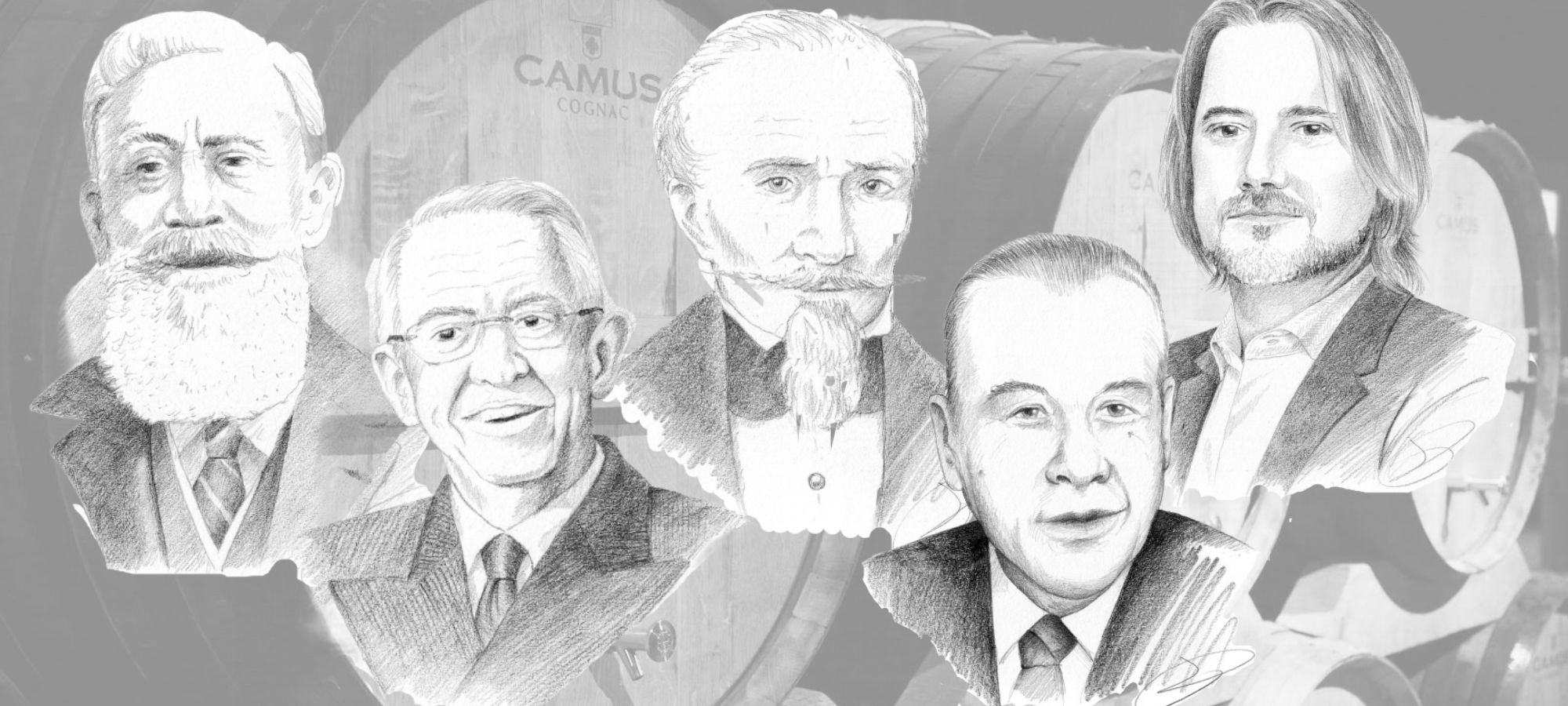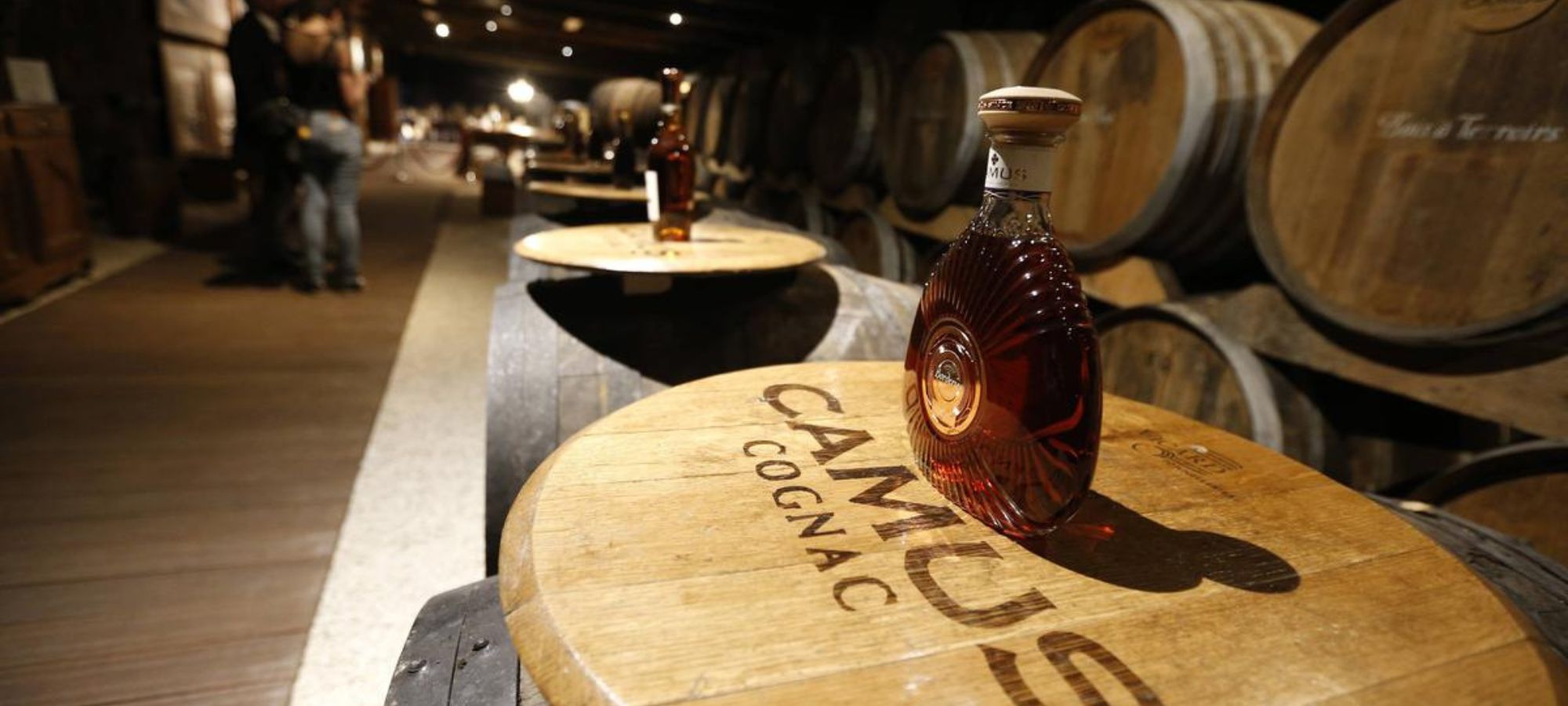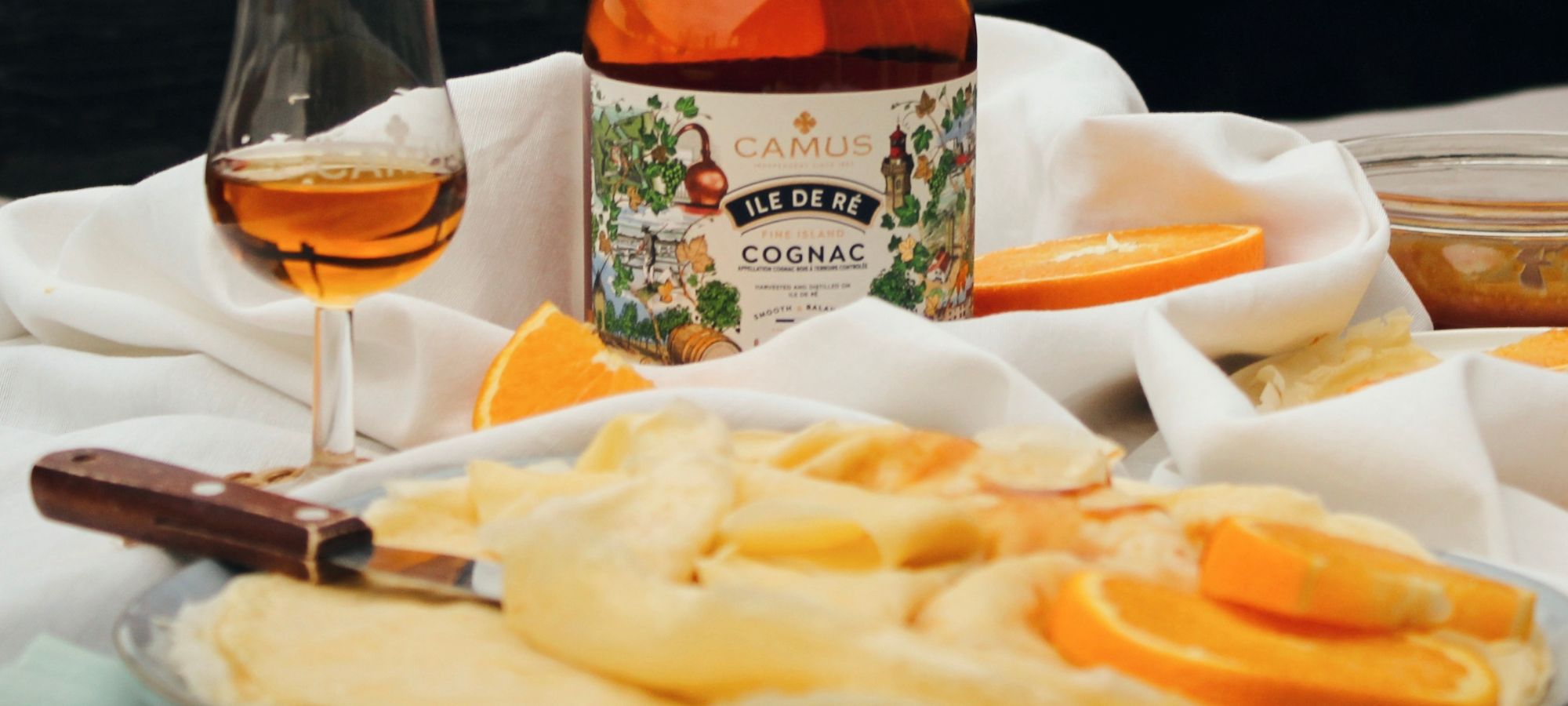
The story of cognac
Cognac is a spirit, i.e. an alcohol-based drink obtained by distilling products that have undergone alcoholic fermentation. It is a simple spirit, also called eau-de-vie, because it owes its aromas to the fermentation of a raw material, the grape. Pure, on the rocks or in long drink, the rich history of cognac can be found at each tasting.
What is cognac ?
The cognac is elaborated by following stages of production inherited from a century-old know-how. The harvest opens the ball. The bunches of white grapes are pressed just after the harvest. The must is then fermented to become wine.
Then comes the double distillation known as "à la charentaise". A double heating is first carried out in a copper still. This first heating allows to obtain the eau-de-vie which will undergo, thereafter, a second distillation. This second distillation is called "bonne chauffe" and allows to distinguish the heads and tails of the cognac. The result is aged in oak barrels for at least three years, the minimum mandatory period.
The next step, called "reduction", consists of adding a small amount of water to obtain the recommended level of alcohol (about 40%). Finally, the cellar master makes the blend. He can either combine several different vintages and aging periods, or he can focus on a single barrel or a single year.
Cognac is classified according to different mentions characterizing its age :
- VS (Very special) : whose youngest eau-de-vie must be at least two years old.
- VSOP (Very Superior Old Pale) : whose youngest eau-de-vie must be at least four years old.
- XO (Extra Old) : whose youngest eau-de-vie must be at least ten years old.
What is the base of cognac ?
Cognac is a grape-based eau-de-vie, with Ugni Blanc as the main grape variety. It is favored for its tolerance to certain diseases, notably grey rot. It is characterized by its high acidity allowing good conservation of the wine, as well as its low sugar content. Ugni blanc is used for 98% of the cognac grape varieties.
Are also used :
- Colombard, one of the oldest grape varieties in the Charente. It shares the maturity, high acidity and low sugar content of Ugni blanc.
- Folle blanche. For a long time, it was the majority variety in the region before the phylloxera crisis. It constitutes less than 1% of the vineyard, because it is very sensitive to grey rot.
- Sémillon is present in the decree of the appellation, but is currently very little used.
- Montils is close to Ugni blanc, but earlier and less acidic.
- Folignan is a new grape variety, a cross between Ugni blanc and Folle blanche. Used in addition to the other grape varieties, it must not exceed 10% of the vineyard's total.
Where was cognac created?
In the Middle Ages, the wines of Charente were appreciated by merchants and sailors who came to refuel in the ports. The circulation of wines was, moreover, facilitated by the river Charente, baptized "the path that walks" by the Romans. With a low alcohol content, the wines of the region did not keep well during long sea voyages. Dutch merchants had the idea of distilling them in copper stills. They first carried out these distillations at home, before carrying them out on site in order to reduce the volumes to be transported. The resulting brandy was named Brandwijn (burnt wine), the origin of the word brandy.
In the XVIIth century, the distillation is carried out with only one heating. The resulting brouillis was consumed with aromatic plants. Following delays in the loading of ships, the distillers realized that the brandy improved with age in oak barrels. It could then be consumed pure.
According to legend, double distillation was discovered by the Chevalier de la Croix Marron, Lord of Segonzac. This pious man dreamed that the Devil was trying to steal his soul by boiling it in a large cauldron. The Devil did not succeed and then put the knight's soul in the pot a second time. When he awoke, the idea of double distillation was born in the Knight's mind.
It was in 1643 that the first trading house was born, driven by the infatuation of Dutch, Scandinavian, British and Irish immigrants with cognac. In the XVIIIth century, the market begins to be organized, but it is the XIXth century which marks the beginning of the development of cognac in the world.
In 1860 the Franco-British free trade treaty was signed which tripled sales of cognac between 1860 and 1879. At the same time, there was a switch from barrels to glass containers. This led to the development of the local glass industry, the manufacture of corks, labels, cardboard, etc. The trading houses preferred to send their cognac in bottles rather than in barrels in order to better promote their brand.
In the XIXth century, The vineyard of Cognac counts 280 000 hectares. However, in 1877 the phylloxera crisis occurred, an aphid that sucked the sap from the roots of the vine. Decimated, the vineyard had only 45,000 hectares left in 1895. The historical grape varieties that had been weakened, such as Folle blanche and Colombard, were replaced by Ugni Blanc, more resistant and acidic enough for distillation.
In 1909, the geographical area of production was delimited, then cognac was recognized as an Appellation d'Origine Contrôlée in 1936. In 1938, the famous cognac crus were determined :
- Grande Champagne, first cru of cognac.
- Petit Champagne, which surrounds the south of Grande Champagne territory.
- Borderies, the smallest cognac cru, where the CAMUS House is located.
- Bons Bois, which encircle Fins Bois, Borderies, Petite Champagne and Grande Champagne.
- Fins Bois, the largest of the crus.
- Bois Ordinaires and their greater maritime influence.
In 1946, the Bureau National Interprofessionnel du Cognac was created to protect the appellation and defend it against imitators.
The oldest cognac in the world
On May 28, 2020, Sotheby's is auctioning a bottle of cognac named Grand Frère dating from 1762. Distilled by the Maison Gautier, it is the oldest vintage known today. Its history: an orphan named Alphonse worked in the Cognac region between 1870 and 1880. Ten years later, he returned to his parents' home with a cartload of bottles of cognac, probably as wages. For 140 years, these bottles were kept in the family cellar. Among them, three cognacs of the House of Gautier, including the Grand Frère bottle, the largest of the three. It was finally sold at 132 000 €.
Cognac consuming countries
Historically, cognac has been an export product. Today, more than 90% of the production is shipped to foreign countries. This figure continues to grow, with more than 211 million bottles exported in 2018-2019, or 2.5%[1] more than the previous year, according to the BNIC.
Cognac is exported to more than 160 countries throughout the world. Among the most consumed areas are the United States, Canada, Mexico and the Far East (China, Singapore, Hong Kong, South Korea, Malaysia, Taiwan, Thailand and Japan). To meet export needs, a plan to expand the Charente vineyard by 10,000 hectares is planned. As for France, in 2021, it was the 5th largest consumer of cognac[2] behind the United States, China, Singapore and the United Kingdom, according to BNIC figures.With its rich and cosmopolitan history, cognac is more than ever an ambassador of the French art of living throughout the world.
[1]https://www.cognac.fr/decouvrir/lhistoire/#:~:text=L%27histoiredu%20Cognac&text=Tout%20a%20commenc%C3%A9%20avec%20la,apparition%20de%20la%20double%20distillation
[2] https://www.sudouest.fr/charente/angouleme/le-cognac-en-2021-plus-de-223-millions-de-bouteilles-vendues-dans-150-pays-au-monde-7806126.php#:~:text=Les%20%C3%89tats%2DUnis%20loin%20devant,(37%2C1%20millions).








